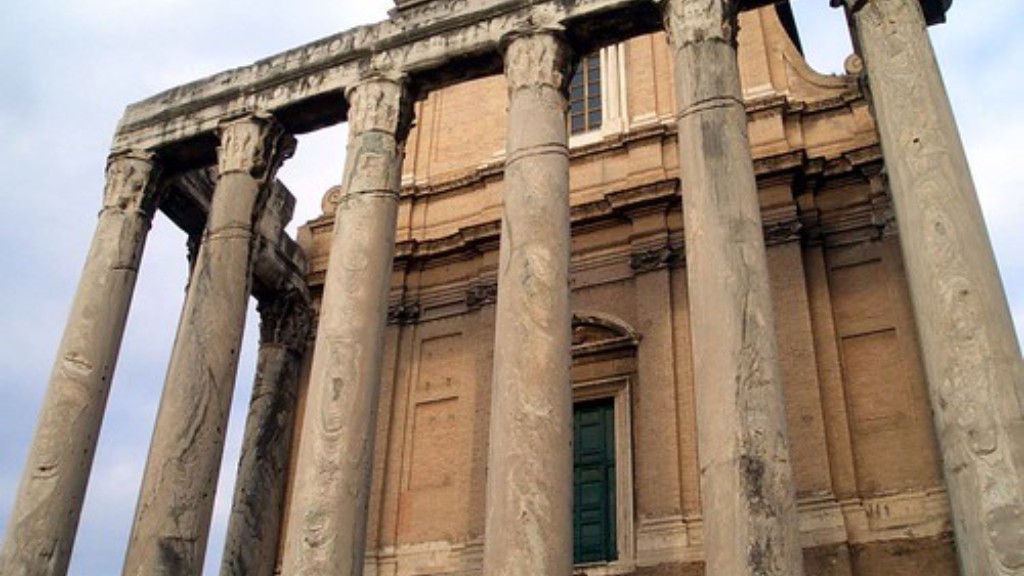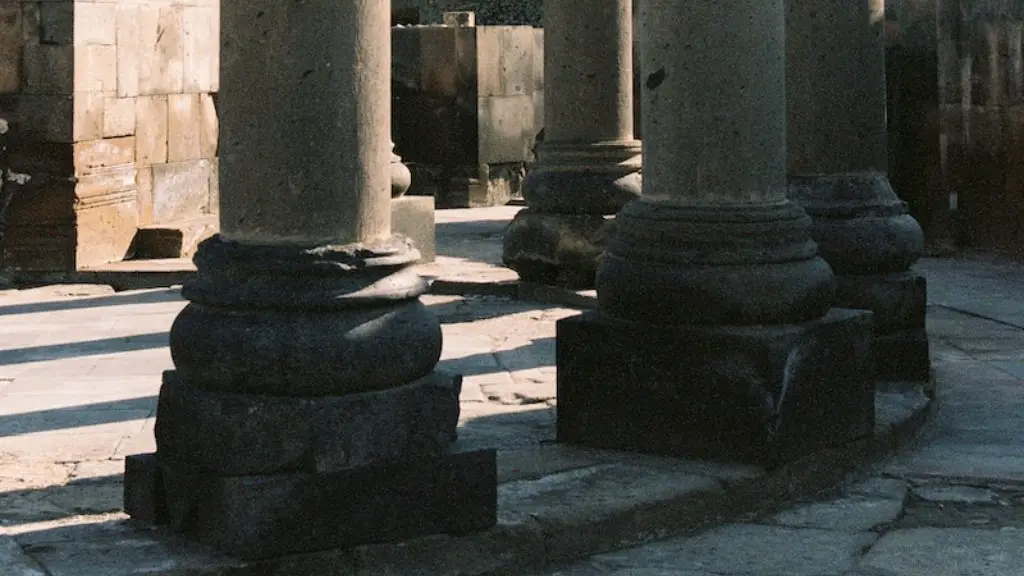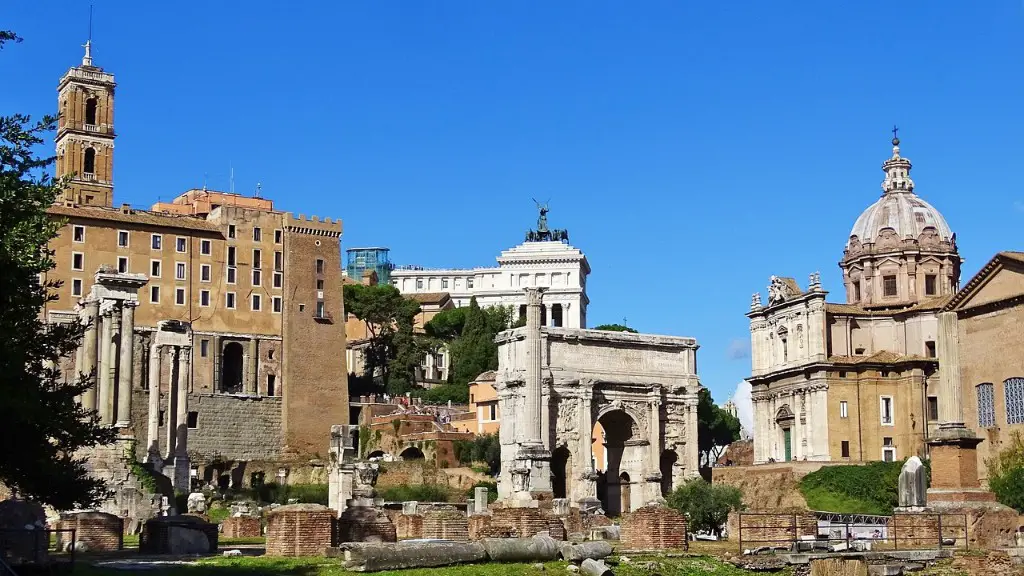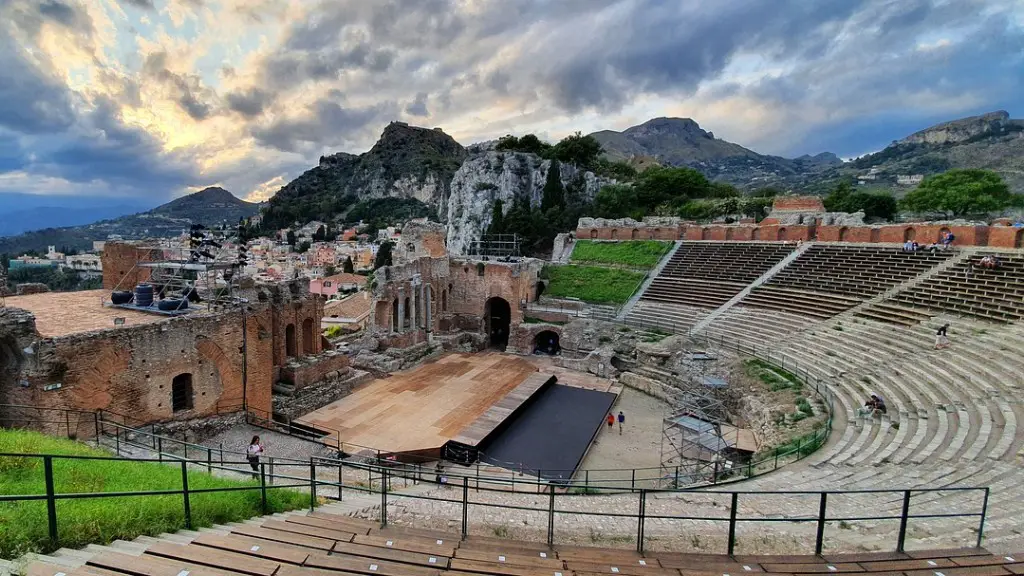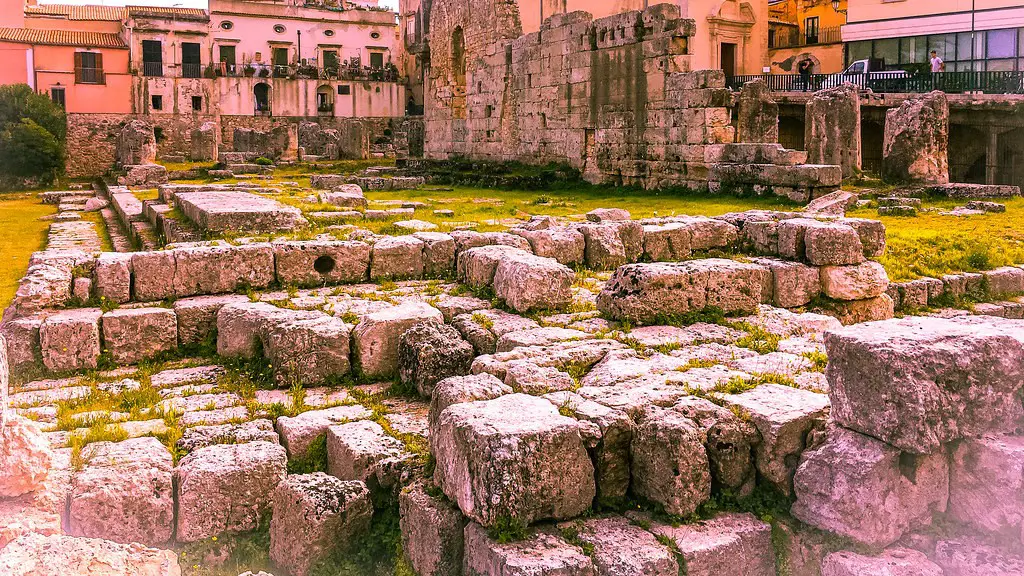What Were Market Days Like in Ancient Rome?
The markets of ancient Rome have long been renowned. Located in the heart of the city, the markets of ancient Rome would come alive on market days. Relics of these street markets have been preserved over the years, and have become some of the most emblematic sites in the city.
Archaeological findings have provided invaluable insight into the way these markets functioned. According to archaeological evidence, the streets of Rome were bustling with merchants, hawkers and peddlers. Inscriptions on pottery and monuments have provided insight into the variety of goods on offer from different walkers and hawkers. Fruits, vegetables, wine, honey, fish and other commodities were sold in the markets.
The markets didn’t just exist for the purposes of trade. Ancient Roman street markets also held a social importance in the city. They provided meeting places, places to rest and enjoy a sip of wine, and places where citizens could engage in public discourse. People could gather and share news, gossip and discuss politics. Thus, the markets of ancient Rome were not just places for commerce, but also places where social norms could be negotiated or reinforced.
Additionally, many religious activities took place at the markets, such as the offering of sacrifices and festivals. Markets also acted as places of worship, where offerings were made to the gods. This allowed the markets to fill a spiritual void as well as a commercial and social one.
The grain dole, which was a form of state welfare, was also distributed in the markets. Thus, the markets were places of sustenance as well, and acted as a symbol of the State’s efforts to provide for its citizens. This form of welfare relied upon the grain dole, which was the primary constituent of the Roman diet, thus ensuring that the citizens of Rome were provided for.
The markets provided an important environment for the development and negotiation of complex economic, social, and political relationships. They allowed for the development of regulations and codes of conduct that were pertinent to Roman society. This could include issues such as how to price goods, what sort of taxes to be imposed and the laws surrounding merchants’ rights.
The markets of ancient Rome are a testament to the complexity of the Roman economy and society. They not only acted as places of commerce, but also provided a space for the social and political movements of the time. Inscribed words, archaeological findings, and Religious rites evidence the significance of the markets of ancient Rome in the trading and social customs of the time.
How Did the Romans Organise Their Markets?
The ‘Macellum’, or Roman market, was the main forum for commerce at the street level. The Macellum offered both permanent and temporary merchants. These merchants, or ‘tabernarii’, hawked their wares from one market to another, giving them the opportunity to constantly adjust their items according to the needs of the customers. This has been suggested as an efficient way of keeping business afloat by catering to the individual needs of customers.
The markets were not just open-air affairs. Many of the markets included indoor arcades as well, providing additional resources apart from just open-air displays. In addition to these markets, traders also had their permanent stalls within the streets, allowing for a more fruitful flow of trade. These stalls were known as ‘macellum’, and were considered an important public institution, with regulations and stipulations that those wishing to use them had to follow.
The tabernarii were found at most macella, and their presence there was a sign of the importance of the markets in ancient Rome. These temporary traders could hawk their wares to all sections of the population. They rarely stayed in one market for long periods of time as they usually moved around, bringing goods from all parts of the Roman Empire.
The macella provided a reliable means of accessing goods. Through the activities of the tabernarii, variety and choice were available for the customers. The tabernarii could offer items at reduced prices, and offer a range of goods unavailable elsewhere. This allowed for a new kind of trade in rural areas where the traditional way of trading was not always prevalent.
The markets were also subject to various forms of taxation, which ranged from tributes levied by private citizens to taxes imposed by the Roman state. This allowed the state to both regulate trade and generate tax revenue. Through this, the macella provided both a source of information and a platform for social interaction.
The macellum commerce of ancient Rome was an efficient way of providing for the needs of the population and managing the economic life of the city. This was a part of the Roman legacy which provided an efficient way of controlling the distribution of goods and giving citizens a place to meet and trade.
What Were the Regulations of Trading in Ancient Rome?
The macellum played an important role in ensuring the efficient functioning of the economy in ancient Rome. As such, it was subject to a set of regulations that were set in place by the Roman government. These rules and regulations allowed the authorities to maintain order and control the markets of Rome.
One of the most important rules in the macellum was one which concerned the exchange of money. It was illegal to charge interest on loans or to offer credit. This was strictly enforced, and traders were expected to comply. If a trader did not comply with this legislation, they faced fines or imprisonment.
The macellum also provided a venue for the negotiation of wages and conditions of employment. It was the responsibility of an employer to negotiate wages and conditions with their employees in the presence of witnesses. It was also considered illegal for an employer to lower wages, or to make deductions from wages without the employee’s consent.
The macellum also allowed for appropriate punishments for wrongdoings in public. This could range from misdemeanours to more serious crimes, and the punishments ranged from fines to imprisonment.
The authorities also sought to ensure the safety of the customers and the public. Through the macellum, it was possible to enforce health and safety standards, and those who failed to comply faced stern consequences. This ensured that the public were in a safe environment.
The macellum regulations of ancient Rome also referenced the legitimate ownership of land. This allowed citizens to identify their land and property accurately, and gave them the right to take legal action to protect or reclaim their land or property. This ensured that any disputes or claims of ownership were kept in check, and that a legal precedent was followed.
The macellum regulations demonstrated the importance of the market system in ancient Rome. It was through these rules and regulations that the Roman economy was kept in order. The regulations of the macella promoted order and stability, giving citizens a safe and secure environment in which to do business.
What Were the Effects of the Markets on Roman Society?
The macella had a direct impact on Roman society. Through economic activities such as trading, wages were earned, resources were exchanged and networks were created. This allowed for the development of a range of public and private institutions, such as banks and guilds. These organisations then created a network of relationships and connections that formed the backbone of Roman society.
The markets of ancient Rome also impacted the way in which Roman citizens interacted with one another. It was through the markets that merchants, customers and suppliers could gain a better understanding of one another and negotiate prices. This allowed citizens to build relationships and create a sense of trust between individuals. This was key to the success of the macellum, as trust was seen as a cornerstone of any successful trade.
The markets had an equally significant spiritual impact. The markets acted as a form of worship, with offerings being made to gods and spirits. This enabled the markets to become a crucial point of encounter between society and the spiritual world. This form of worship also had an impact on Roman society, making the markets a place for spiritual mediation between the Roman citizens and the gods.
The markets had a direct impact on the way in which goods and services were distributed. Resources could be exchanged and traded, allowing for goods to be relatively easily transported from one location to another. This, in turn, caused a ripple effect. It allowed for the growth of trade and commerce, leading to the development of larger cities and the growth of the Roman Empire.
Finally, the markets of ancient Rome provided a forum for political, social and cultural debates. Public discourse was fostered and knowledge was shared, allowing for the growth of a more informed populace. This enabled progress and social development, contributing to the idea of a progressive Roman society.
What Was the Role of Religion in the Markets?
It is clear from archaeological records that religion played a significant role in the markets. This was demonstrated through the various offerings and sacrifices that were made to the gods, as well as the organisation of religious festivals. This combination of commerce and worship allowed for a deeper spiritual connection to be made with the gods, which has been suggested as being a crucial part of the Roman experience.
Additionally, the macella acted as a forum for debating theological ideas. Traders, their customers, and the gods alike could come together and discuss a variety of issues related to the spiritual world. This provided a valuable opportunity for people to converse, contrast different points of view, and gain a better understanding of their beliefs and practices.
The markets were also recognised as places of ritual and ritual acts. This would manifest itself in forms such as the offering of sacrifices and the cutting of hair. These were seen as signs of reverence and respect for the gods, and were making offerings to them in order to receive good fortune or protection.
Finally, the markets provided a space for Roman citizens to perform religious rites. This was seen as a way of expressing one’s faith, and of responding to the gods. This mirrored the religious festivals and practices of ancient Greece, and was a way of reinforcing the faith of the population.
What Was the Impact of the Markets on the Economy?
The macella had a direct impact on the Roman economy. The markets allowed for goods to be exchanged and exchanged quickly among the populace. This helped to ensure that resources were readily available, and helped to keep the Roman economy afloat.
The markets also provided a reliable source of income for those involved in trading. This enabled Roman citizens to acquire a comfortable lifestyle and encouraged people to become involved in commerce. This, in turn, had a positive impact on the Roman economy in the long run as it created a thriving and successful trading network.
The markets also acted as a form of regulation. This could involve topics such as pricing, labour laws, and taxes, which helped to ensure fairness and an even playing field among traders and customers. This, again, helped to ensure the success of the Roman economy.
The markets of ancient Rome were seen as important institutions that acted as the foundation for the economic system of the time. It provided a reliable forum for trade and negotiation, while also regulating the availability of goods and resources. This ensured that the Roman economy remained strong and prosperous.
What Else Do We Know About the Markets?
The markets of ancient Rome were a cornerstone of the city’s prosperity. Through archaeological evidence, inscriptions and other sources, we can gain a better understanding of how these sites functioned and the role that they played in the Roman Empire.
The macella were places of activity, with traders and customers moving in and out. They provided a place for merchants to offer their goods and services, and for customers to find what they needed. This made the markets a vital economic hub for the public and for the Roman state.
The macella were also places of social gathering, where people could come together to share news, gossip and discuss politics. This allowed the macella to act as social spaces, providing a forum for the public to negotiate and understand prevailing social norms. Through this, members of the Roman public had a direct impact on the political and social discourse of the time.
The markets of ancient Rome have long been recognised as central to the functioning of the city. Through archaeological remains and records, we can gain a better understanding of the complexity and importance of the marketplace in the Roman Empire. The mace

